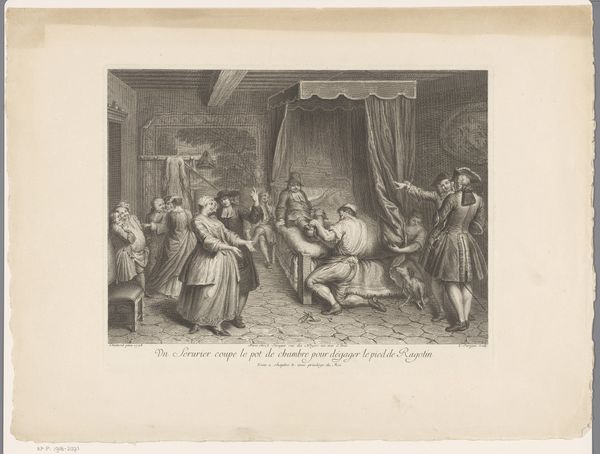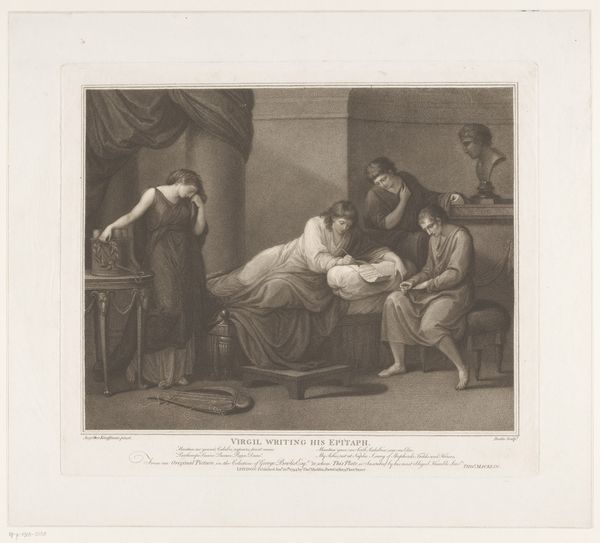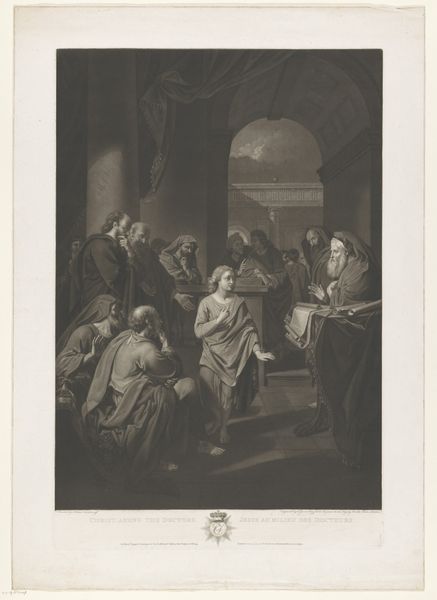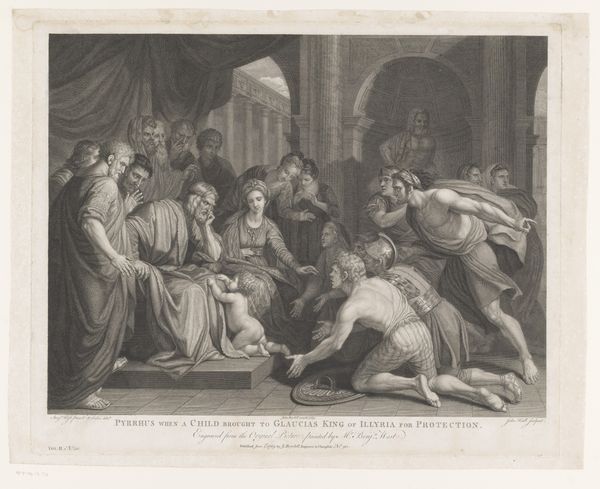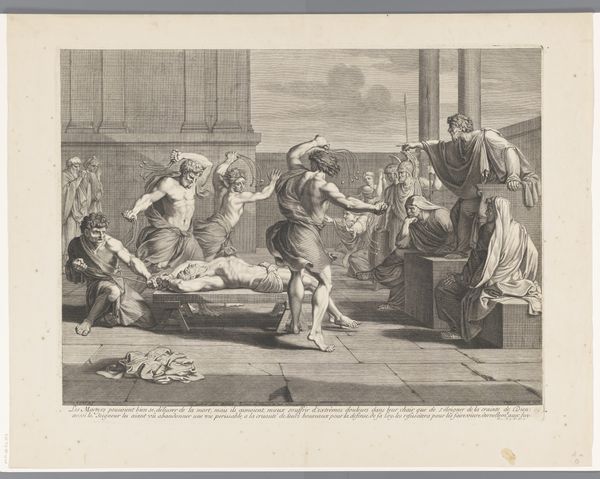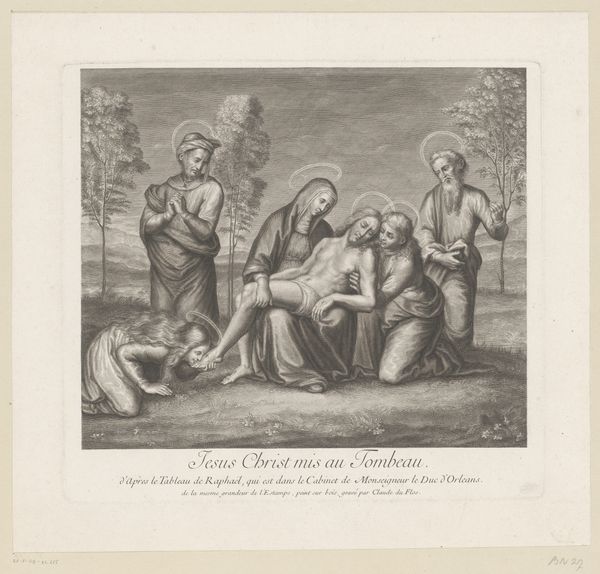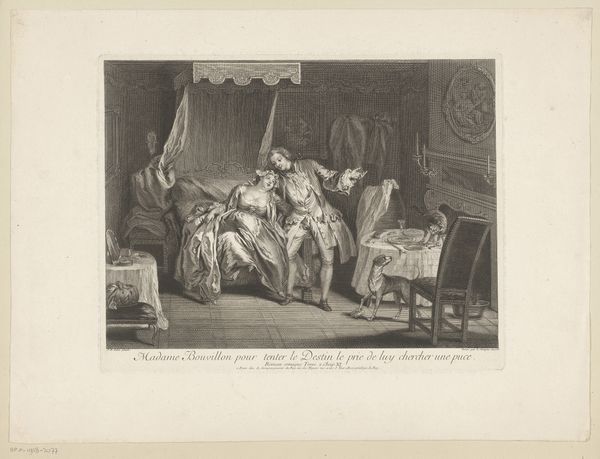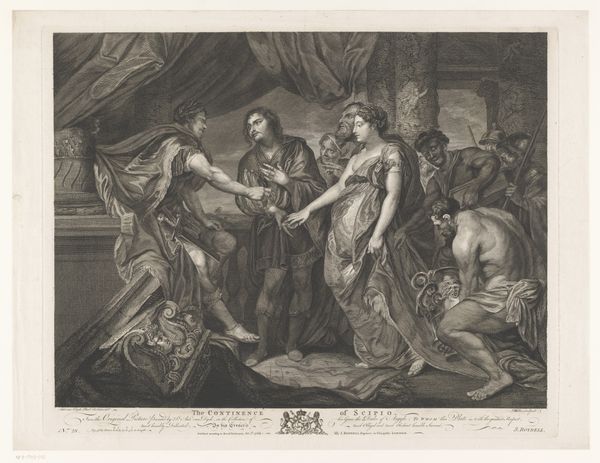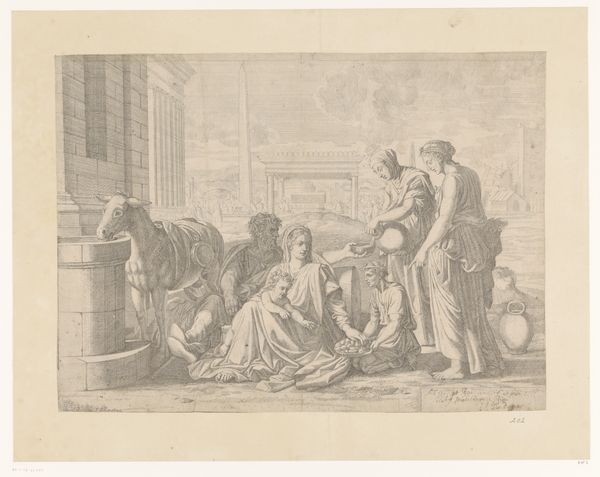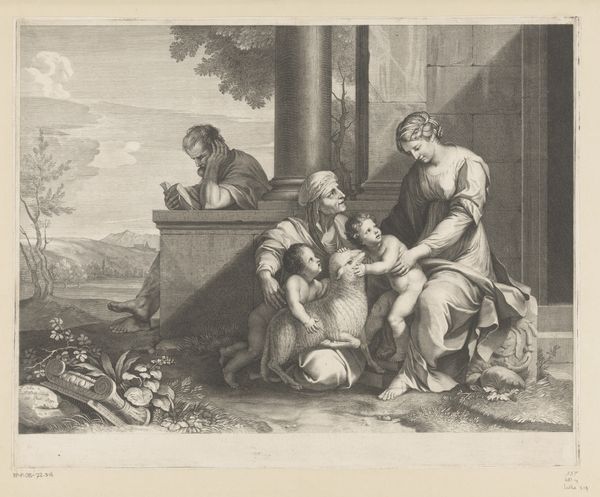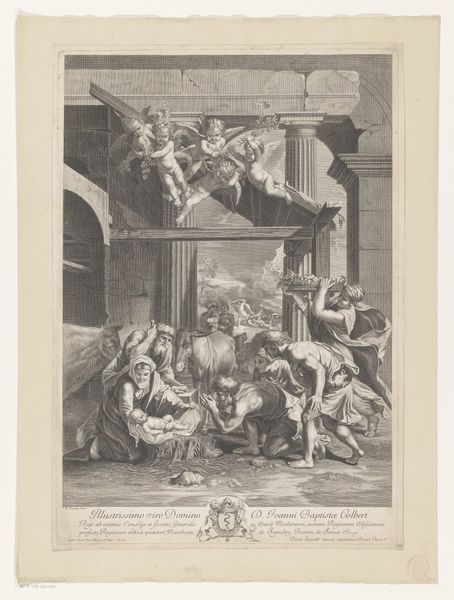
print, engraving
#
neoclacissism
#
narrative-art
# print
#
figuration
#
19th century
#
history-painting
#
engraving
Dimensions: height 429 mm, width 504 mm
Copyright: Rijks Museum: Open Domain
Curator: This engraving, dating to 1794, presents a dramatic scene titled "Plinius de Jongere door een vriend van zijn oom berispt," or, "The Younger Pliny Reproved." Editor: My first thought is the tension radiating from the central figures! There’s an emotional density packed into this monochromatic image that pulls you right into the scene. Curator: Indeed. The artist, Thomas Burke, using the technique of engraving, captures a specific narrative moment related to Pliny the Younger’s historical accounts. He worked using a stylus to cut this into a copper plate, then carefully wiping ink into those grooves. The printmaking production here involved skilled labor and suggests an expanding market for disseminating historical narratives in domestic settings. Editor: Placing it in historical context, engravings like these, particularly those depicting historical narratives, served to shape perceptions of identity, civic virtue, and political morality in the late 18th century. Consider, too, the figures fleeing. Burke stages this intimate scene against a backdrop of social upheaval and disaster, almost framing moral virtue against a lack thereof, and perhaps using Pliny’s moment to discuss other moral failings. Curator: Absolutely. And the formal neoclassical elements are key. The architecture in the image--the columns, archways—create this carefully designed stage upon which the story unfolds. Think about how this connects to architectural design principles of the era, where accessible forms acted to instruct viewers about correct behaviors in all sorts of spaces. Editor: From a critical perspective, there’s also a visual hierarchy. Who’s doing what work? Where are women and children located? Why does it matter for the telling of history that an uncle corrects his nephew in the way the image represents it. This reinforces certain social dynamics and privileges. It gives this act, and Burke himself, some credibility by virtue of having classical authority. Curator: Good points. This piece prompts us to question whose stories are being told and how materials and artistic techniques help shape and reflect social values. Editor: This deep dive helps unveil the values encoded into the Neoclassical art and the power of even a reproductive print like this to shape discourse on ethics and citizenship, for then and perhaps now.
Comments
No comments
Be the first to comment and join the conversation on the ultimate creative platform.
